
Die Entwicklung der Dessous-Herstellung als Reaktion auf die Körpervielfalt
I. Einleitung
In den letzten Jahren wurde die Bedeutung der Körpervielfalt in der Modebranche zunehmend anerkannt. Zu lange wurde die Modeindustrie dafür kritisiert, einen engen und unrealistischen Schönheitsstandard zu fördern, der viele Menschen ausschließt, insbesondere solche mit unterschiedlichen Körpertypen. Die Modebranche hat sich jedoch mit dem Aufstieg der Körperpositivität und der Körperakzeptanzbewegung in Richtung größerer Inklusivität und Vielfalt verlagert.
Diese Verschiebung war in der Dessous-Branche von Bedeutung, wo in der Vergangenheit eine stärkere Darstellung verschiedener Körpertypen erforderlich war. Angesichts der steigenden Nachfrage nach Body-Positive- und Size-Inclusive-Dessous besteht für Dessous-Hersteller jedoch ein wachsendes Bedürfnis, der Körpervielfalt in ihren Herstellungsverfahren Priorität einzuräumen. Auf diese Weise können sie dazu beitragen, eine integrativere und stärkere Botschaft über Körpervielfalt in der Modebranche zu verbreiten.
Die Dessous-Industrie hat eine lange Geschichte, die bis ins 19. Jahrhundert zurückreicht, als die ersten BHs und Korsetts erfunden wurden. Die Dessous-Industrie wird jedoch seit langem dafür kritisiert, unrealistische, restriktive Schönheitsstandards zu fördern, die viele Körpertypen ausschließen. Mitte des 20. Jahrhunderts gab es mit dem Aufstieg der feministischen Bewegung und der Popularität natürlich aussehender Dessous eine kurze Zeit der Rebellion gegen traditionelle Schönheitsstandards. Dieser Trend war jedoch nur von kurzer Dauer, und in den 1980er Jahren war die Dessous-Industrie wieder dazu übergegangen, enge und unrealistische Schönheitsstandards zu fördern.
In den letzten Jahren gab es ein wachsendes Bewusstsein für die Notwendigkeit einer größeren Körpervielfalt in der Modeindustrie, einschließlich der Dessousindustrie. Viele Dessous-Hersteller haben auf diese Nachfrage reagiert, indem sie größenbezogene, figurbetonte Linien eingeführt haben. Es muss jedoch noch viel getan werden, um eine größere Körpervielfalt in der Dessousindustrie zu fördern und sicherzustellen, dass sich alle Menschen, unabhängig von ihrem Körpertyp, durch Dessous repräsentiert und gestärkt fühlen.


II. Die Notwendigkeit der Körpervielfalt in der Dessous-Herstellung
Die nachteiligen Auswirkungen mangelnder Körpervielfalt in der Dessous-Herstellung
Ein Mangel an Körpervielfalt in der Wäscheherstellung kann sich nachteilig auf den Einzelnen und die Gesellschaft auswirken. Erstens kann es unrealistische und enge Schönheitsstandards aufrechterhalten, was zu körperliche Unzufriedenheit und geringes Selbstwertgefühl. Dies wiederum kann sich nachteilig auf die psychische Gesundheit auswirken, einschließlich eines erhöhten Risikos für Depressionen, Angstzustände und Essstörungen.
Zweitens kann ein Mangel an Körpervielfalt bei der Dessousherstellung zu eingeschränkten Möglichkeiten und einer schlechten Passform für Personen mit nicht standardmäßigen Körpertypen führen. Das kann dazu führen Beschwerden, Schmerzen und sogar gesundheitliche Probleme, wie Rückenschmerzen und schlechte Körperhaltung.
Schließlich kann ein Mangel an Körpervielfalt in der Dessous-Herstellung weitreichendere soziale Auswirkungen haben und zur Marginalisierung und Ausgrenzung von Personen mit unterschiedlichen Körpertypen beitragen. Dies kann schädliche Stereotypen verstärken und dazu beitragen Diskriminierung und Vorurteile gegen Menschen mit nicht standardmäßigen Körpertypen.
Insgesamt ist klar, dass ein Mangel an Körpervielfalt in der Wäscheherstellung erhebliche nachteilige Auswirkungen auf den Einzelnen und die Gesellschaft als Ganzes haben kann. Daher müssen Hersteller von Dessous der Körpervielfalt in ihren Herstellungsverfahren Priorität einräumen.
Die Vorteile der Versorgung verschiedener Körpertypen
Catering to diverse body types in lingerie manufacturing can benefit individuals and society. Firstly, it promotes greater body acceptance and positivity by showing that all bodies are beautiful and deserving of respect and representation. This can help reduce shame and inadequacy related to body size and shape and promote greater self-esteem and mental well-being.
Secondly, catering to diverse body types can result in better fit and comfort for individuals with non-standard body types. This can lead to improved physical health, including reduced risk of back pain, poor posture, and greater ease and confidence.
Finally, catering to diverse body types can have broader social benefits, including greater inclusivity and representation of people with various body types in the fashion industry. This can help challenge harmful stereotypes and promote greater understanding and acceptance of different body types, ultimately contributing to a more diverse and inclusive society.
Overall, it is clear that catering to diverse body types in lingerie manufacturing can have significant benefits for individuals and society as a whole. Therefore, lingerie manufacturers need to prioritize body diversity in their manufacturing practices.
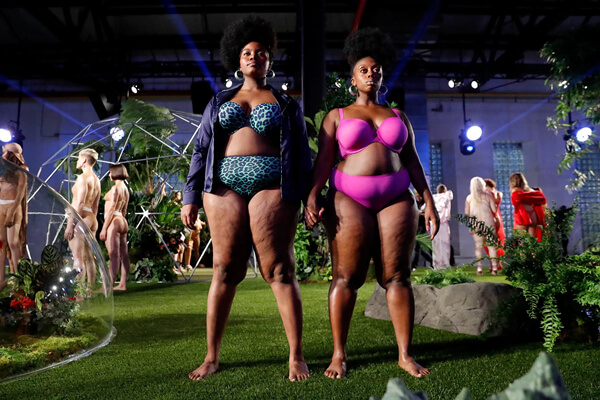
III. The Evolution of Lingerie Manufacturing in Response to Body Diversity
The history of the lingerie industry's response to body diversity
For much of its history, the lingerie industry has been criticized for promoting narrow and unrealistic beauty standards that exclude many body types. However, in recent years, there has been a growing awareness of the need for greater body diversity in the fashion industry, including in the lingerie industry.
In response to this demand, many lingerie manufacturers have introduced size-inclusive and body-positive lines featuring a more comprehensive range of sizes and styles designed to accommodate various body types. This has included the introduction of plus-size lingerie lines and lingerie lines designed specifically for individuals with different body shapes, such as fuller busts or curvier figures.
In addition to expanding their size ranges, many lingerie manufacturers have also focused on promoting greater body acceptance and positivity through their marketing and branding efforts. This has included featuring models with diverse body types and skin tones in their advertising campaigns and using inclusive language and messaging that celebrates bodies of all shapes and sizes.
Overall, while the lingerie industry has a long history of promoting narrow and unrealistic beauty standards, it is clear that there has been a significant shift in recent years toward greater body diversity and inclusivity. However, much work must be done to ensure that all individuals, regardless of body type, feel represented and empowered by Lingerie.
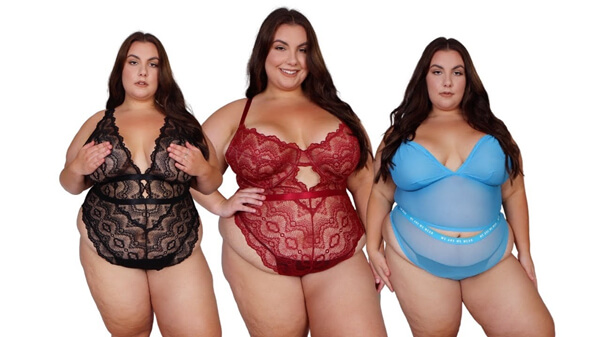
Plus Size Lingerie
The current state of the lingerie industry's approach to body diversity
While there has been progressing in recent years, the lingerie industry still has a long way to go in embracing body diversity and inclusivity. Many lingerie manufacturers still have limited size ranges, with some brands only offering sizes that cater to smaller body types. This can make it difficult for individuals with non-standard body types to find Lingerie that fits well and makes them feel comfortable and confident.
In addition, while there has been an increase in size-inclusive and body-positive lingerie lines, these lines are still often marketed as separate and distinct from the brand's main line of Lingerie. This can reinforce the idea that body diversity is a niche or specialized concern rather than a fundamental aspect of lingerie manufacturing.
Finally, while there has been progress in featuring models with diverse body types in advertising campaigns, there is still a long way to go in ensuring that all individuals feel represented and included. Many brands still feature a limited range of body types and sizes, which can reinforce harmful beauty standards and exclude many individuals from feeling seen and valued.
Overall, while the lingerie industry has made progress toward greater body diversity and inclusivity in recent years, there is still much work to be done to ensure that all individuals, regardless of their body type, feel represented and empowered by Lingerie.
Examples of lingerie brands that prioritize body diversity
While there is still much work to be done in the lingerie industry when it comes to embracing body diversity and inclusivity, some brands are leading the way in this regard. Here are a few examples of lingerie brands that prioritize body diversity:
ThirdLove: ThirdLove is a lingerie brand that offers a wide range of sizes, including half-cup measures, to ensure that all individuals can find a bra that fits them perfectly. Their advertising campaigns also feature diverse models of different sizes, shapes, and skin tones.
Savage X Fenty: Rihanna's lingerie brand, Savage X Fenty, has been praised for its size-inclusive approach, offering a wide range of sizes and styles designed to accommodate various body types. Their advertising campaigns also feature diverse models, celebrating bodies of all shapes and sizes.
Lonely Lingerie: Lonely Lingerie is a New Zealand-based brand recognized for its body-positive approach, featuring diverse models of different ages, sizes, and skin tones in their advertising campaigns. They also prioritize ethical manufacturing practices, ensuring that their Lingerie is made in a sustainable and socially responsible way.
Playful Promises: Playful Promise is a UK-based brand that offers a range of sizes, including plus sizes, and features diverse models in their advertising campaigns. They are also committed to ethical manufacturing practices and have partnered with organizations to promote greater inclusivity and diversity in the fashion industry.
Overall, while there are still many challenges facing the lingerie industry when it comes to embracing body diversity, these examples show that some brands are leading the way in this regard and prioritizing inclusivity and empowerment for all individuals.
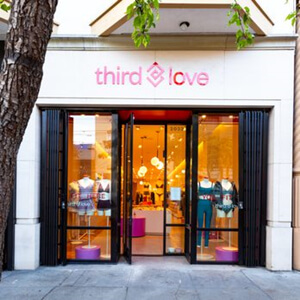
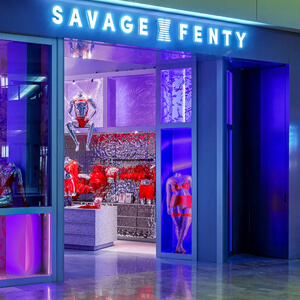


IV. The Future of Lingerie Manufacturing and Body Diversity
The potential for increased body diversity in the lingerie industry
Despite the progress made in recent years, there is still a long way to go when embracing body diversity in the lingerie industry. However, there is also great potential for positive change in the future.
One key factor that could drive increased body diversity in the lingerie industry is consumer demand. As consumers become more aware of the importance of inclusivity and representation in fashion, they will likely seek brands that prioritize these values. Brands that fail to adapt to this shift in consumer preferences may find themselves left behind.
Another factor that could drive change is the influence of social media. Influencers, activists, and everyday individuals can use social media platforms to share their stories and experiences and to call attention to the need for change. As social media continues to play an increasingly important role in shaping fashion trends and influencing consumer behavior, it has the potential to amplify the voices of those advocating for greater body diversity in the lingerie industry.
Finally, technological advancements and manufacturing could also increase body diversity in the lingerie industry. 3D printing and other technologies could create custom-fit Lingerie tailored to individual body types. This would ensure that all individuals, regardless of their size or shape, have access to underwear that is both comfortable and flattering.
In conclusion, while there is still much work to be done to embrace body diversity in the lingerie industry, there is also great potential for positive change. By prioritizing inclusivity, listening to consumer demand, leveraging the power of social media, and exploring new technologies and manufacturing processes, the lingerie industry can help to create a more diverse and empowering fashion landscape for all individuals.
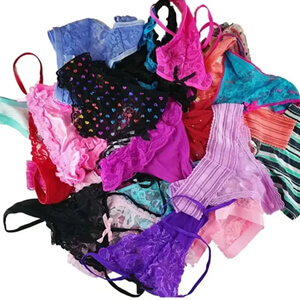
Consumer Demand

Social Media

3d Print
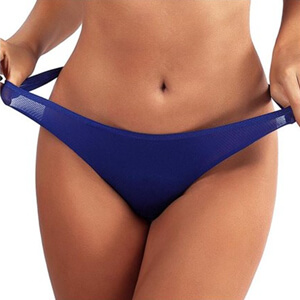
Stretchable Material

Virtual Try-on
The role of technology and innovation in achieving greater body diversity
Technology and innovation will be essential to attain greater body diversity in the lingerie industry. There are several ways in which technology can be leveraged to create more inclusive lingerie products.
One example is the use of 3D printing technology. This technology has the potential to revolutionize the lingerie industry by allowing for the creation of custom-fit Lingerie tailored to individual body types. This would help to ensure that all individuals, regardless of their size or shape, have access to underwear that is both comfortable and flattering.
Another example is the use of innovative materials. Lingerie brands are increasingly experimenting with new materials designed to be more comfortable and accommodating for a broader range of body types. For example, some brands are using stretchier materials that are better able to accommodate different bust sizes, while others are using softer, more breathable fabrics that are ideal for individuals with sensitive skin.
Finally, technology can also be used to improve the shopping experience for consumers. Many lingerie brands are experimenting with virtual try-on technology, allowing consumers to see how different lingerie products will look on their bodies without trying them on in person. This technology can benefit individuals who feel uncomfortable or self-conscious about trying on Lingerie in a physical store.
In conclusion, technology and innovation will be essential in achieving greater body diversity in the lingerie industry. By leveraging new technologies and materials and improving the shopping experience for consumers, lingerie brands can help create a more inclusive and empowering fashion landscape for individuals of all body types.
The potential impact of increased body diversity on the lingerie industry and society as a whole
Increased body diversity in the lingerie industry can bring about significant positive change, both within and in society.
From a business perspective, catering to a broader range of body types can help lingerie brands to tap into new markets and increase their customer base. This can lead to increased revenue, profitability, and greater brand loyalty from customers who feel seen and valued by the brand.
On a societal level, increased body diversity in the lingerie industry can help to challenge harmful beauty standards and promote body positivity. Lingerie brands can encourage greater acceptance and appreciation of diverse bodies by showcasing a more comprehensive range of body types in their marketing and product offerings.
In addition, increased body diversity in the lingerie industry can also help promote greater inclusivity and representation in the fashion industry. By challenging traditional beauty standards and embracing a more comprehensive range of body types, the lingerie industry can serve as a model for other fashion sectors and help promote greater diversity and inclusivity.
Overall, increased body diversity in the lingerie industry has the potential to bring about significant positive change both within the industry and in society as a whole. By promoting greater inclusivity, representation, and body positivity, lingerie brands can help to create a more empowering and accepting fashion landscape for individuals of all body types.
V. Schlussfolgerung
As times change, the need for body diversity has become increasingly urgent. In particular, lingerie manufacturing requires additional support and fit for different body types, making it essential to improve body diversity in this industry.
This article aims to explore the response of the lingerie manufacturing industry to body diversity and its future development trends. By analyzing the history of lingerie manufacturing, the adverse effects of a lack of body diversity, the benefits of catering to diverse body types, and the evolution of the industry's response to body diversity, we have shown that the lingerie industry has made significant progress in recent years but still has room for improvement.
We have also discussed the potential impact of increased body diversity on the lingerie industry and society, highlighting the positive changes that can result from greater inclusivity, representation, and body positivity.
Overall, the lingerie industry has the opportunity to play a significant role in promoting body diversity and inclusivity in the fashion industry and society. By continuing to innovate and embrace diversity, lingerie brands can create a more empowering and accepting fashion landscape for individuals of all body types.
